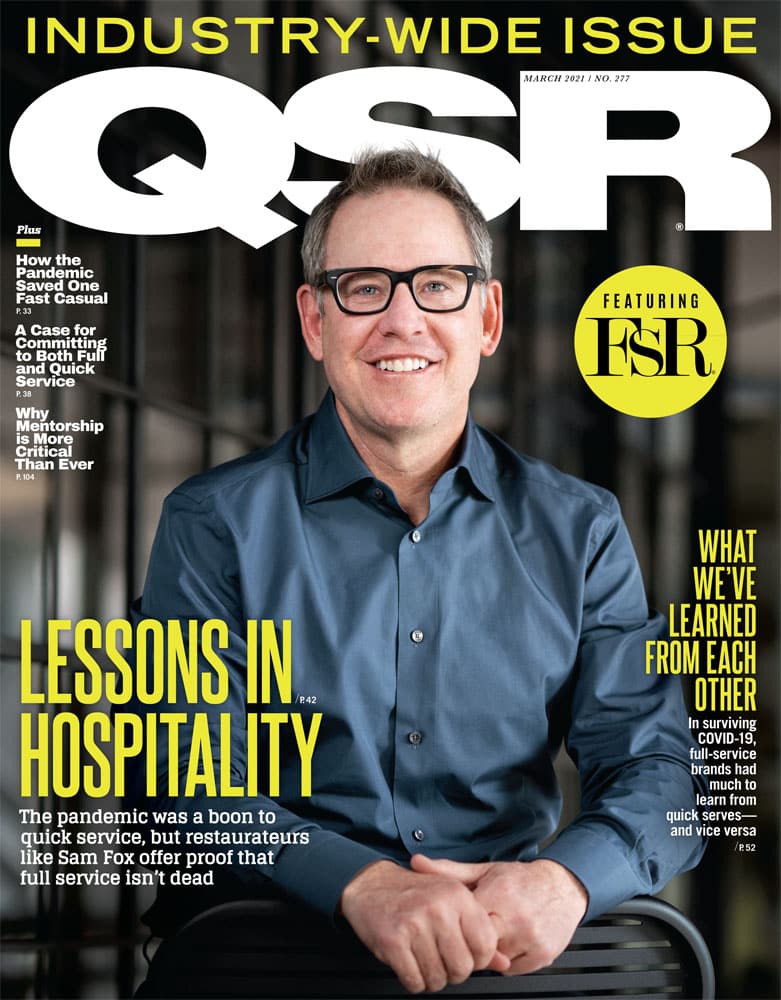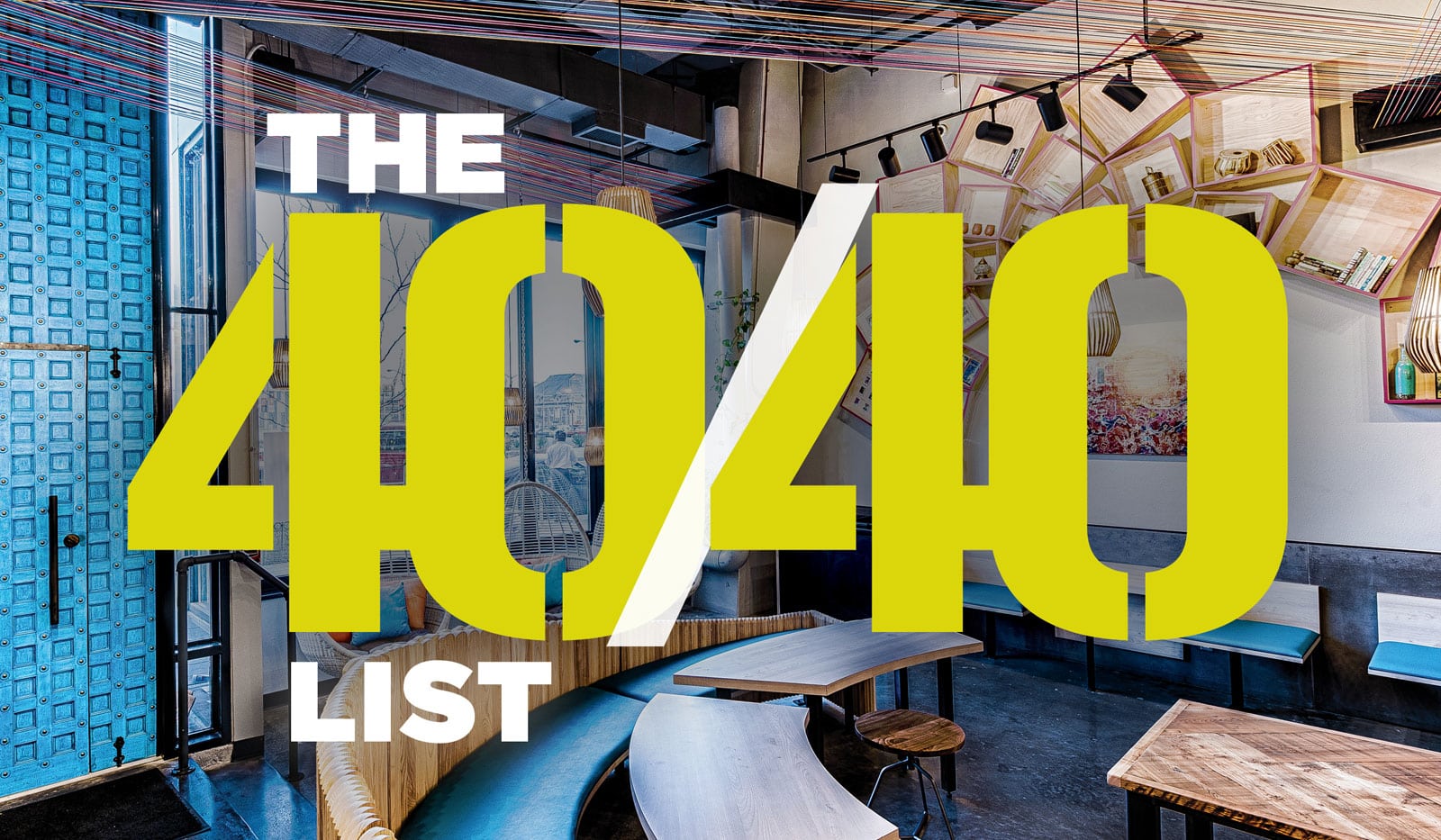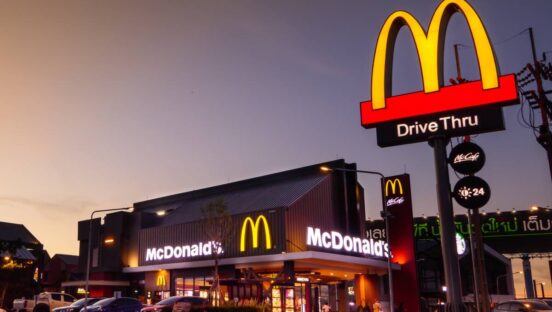Whether it’s a silver lining of COVID-19 or the acceleration of trends coming pre-virus, McDonald’s recent run offers a window into the future of fast food: The evolution of the customer experience from the physical world to the digital one.
“At our founding, the restaurant experience was relatively simple,” McDonald’s CEO Chris Kempczinski said Wednesday. “Customers would walk up to the front counter, place their orders and get hot, delicious fresh food served to them quickly.”
In the early 1970s, drive-thru went mainstream for McDonald’s. And over the last few years, delivery, curbside pickup, kiosks, and even table service joined in.
Yet while digital was a key lever for McDonald’s before COVID, the pandemic and its clamp on dine-in business sparked a shift in customer habits that adjusted the $40 billion company’s outlook.
McDonald’s digital systemwide sales across its top six markets reached nearly $8 billion in the first half of 2021—a 70 percent increase versus last year. It’s exactly why the brand is moving aggressively, Kempczinski said, to bring its new MyMcDonald’s Rewards platform to these areas. It’s currently live in France and the U.S. (nationwide as of July 8). Germany and Canada are on deck before the year’s end, followed by the U.K. and Australia in 2022.
There are already more than 22 million active MyMcDonald’s app users in America, with north of 12 million enrolled in the loyalty program. “And that’s before national advertising for loyalty,” Kempczinski said, “which began earlier this week.”
In recent months, McDonald’s app topped most-downloaded lists and is the country’s No. 1 quick-serve offering, Kempczinski said. What this showcases, he added, is McDonald’s marketing potential in regards to personalization, and why optimism is surging into the system.
McDonald’s global same-store sales jumped 40.5 percent in Q2, or 6.9 percent on a two-year basis. The U.S. business lifted 25.9 percent (14.9 percent across two years). The domestic effort marked McDonald’s strongest quarterly two-year growth in more than 15 years.
Additionally, the chain saw double-digital positive comps across all dayparts on a two-year stack. Franchisees reported record-high operating cash flow, up more than $100,000 through May of this year compared to 2020. McDonald’s revenues increased 57 percent to $5.89 billion.
Kempczinski said McDonald’s reacted to evolving market conditions. The chain’s focus turned to transforming multiple touchpoints into a holistic brand experience. In other terms, McDonald’s suddenly has a lot of trade channels to remove friction from.
“Our customers should be able to move seamlessly between the in-store, takeaway, and delivery service channels so that we offer even more convenience and better personalization,” he said.
Earlier this week, McDonald’s announced the creation of a team dedicated to guiding its end-to-end customer experience. The brand promoted 20-year vet Manu Steijaert to a newly created role of EVP and global chief customer officer.
Steijaert’s tasks include everything from the physical restaurants McDonald’s designs to how it embeds digital experience along each step of the customer journey. Following the chain’s completion of its global Experience of the Future remodel program, Kempczinski said Steijaert will zero in on “what’s next to drive a new layer of sustained growth for our system that leverages the foundations that we’ve built.”
In the past 18 months, McDonald’s standardized its infrastructure to align against some of these omnichannel goals. Plans ultimately paved the way for MyMcDonald’s Rewards, which is the company’s first global digital offering in its history.

You can see it playing out across a few areas. Firstly, McDonald’s “Famous Orders” platform, where the brand taps a celebrity to showcase their favorite meal, has helped McDonald’s speak to a new generation in authentic ways, Kempczinski said, while also boosting digital engagement. All without adding restaurant complexity since it’s a curation of products already on the menu, not an LTO or product-focused promotion.
The first—Travis Scott’s meal—arrived in September and represented the first time since 1992 a celebrity’s name was featured on McDonald’s lineup, only done prior by Michael Jordan.
It included a fresh beef Quarter Pounder with cheese, bacon, and lettuce, medium fries with barbecue sauce, and a Sprite. “The Famous Orders platform was based on a simple idea, but unites all our customers, including famous celebrities, is everyone has their go-to McDonald’s order,” Kempczinski said.
The Travis Scott and ensuing J Balvin collaborations broke U.S. records. Yet they only set the stage for the most recent BTS Famous Order, which took McDonald’s ambitions global, connecting marketing, core menu, and digital strategies across 50 markets. It also marked the first time McDonald’s did so with custom packaging and four consecutive weeks of in-app content.
Kempczinski called the results “dynamite,” nodding to a lyric from the South Korean band.
The chain saw “significant” lifts in McNuggets sales and new levels of social engagement. But perhaps most notably, app downloads soared. McDonald’s trended No. 2 on Twitter across the world at one point, and No. 1 in the U.S. BTS and McDonald’s then created a merchandise lineup.
On Thursday, McDonald’s unveiled its next iteration, with hip-hop artist Saweetie. It lands August 9 and includes a Big Mac, 4-piece Chicken McNuggets, medium fries, Sprite, barbecue sauce and, “Saweetie ‘N Sour” sauce. This collaboration will also be served in new packaging.
“This is just the beginning of the digital customer journey at McDonald’s,” Kempczinski said. “As we create more personal and seamless McDonald’s experiences and make it easier for our crew to connect with our customers, we’re giving customers multiple reasons to continue to come back to McDonald’s. By using digital, we’ll also leverage our advantages in value and convenience, daypart and menu breadth and our biggest advantage, our size and scale.”

Kempczinski said McDonald’s app, especially among younger consumers, is fast-becoming a preferred way to interact with the brand. “And so, our ability to actually have the app connect through the drive-thru to be able to have loyalty be embedded in part of the drive-thru experience, I think all of these things are part of the vision of these different service channels, different ways of accessing McDonald’s,” he said. “They all have to work kind of seamlessly together on that. And we’re seeing good uptick.”
CFO Kevin Ozan added loyalty drives digital adoption as well as shorter purchase cycles or greater frequency of visits among core customers. Essentially, digital engagement generally inspires loyalty users to return more frequently.
Additionally, McDonald’s rode momentum in Q2 from its Crispy Chicken Sandwich launch, Kempczinski said. It aired an advertising re-hit this quarter, which helped sales stay at elevated levels, Ozan said.
Another boost could be on the way as well, as McDonald’s expects to have nearly all of its domestic dining rooms open by Labor Day, barring a resurgence in COVID cases. Today, it’s about 70 percent.
Kempczinski also addressed the labor shortage pressing restaurants, calling the dynamic a “highly competitive market for talent.”
In May, McDonald’s announced a 10 percent increase in the average hourly wage at corporate U.S. stores, with the goal to reach $15 per hour by 2024.
“I don’t want to declare by any means that it’s easy,” he said, but we’re certainty seeing some improvement.”
Kempczinski said McDoanld’s applications of late “increased pretty significantly.” Even more so in states that ended federal stimulus early. He believes application rates will only improve as expanded benefits roll off. “And I think you’re seeing wages go up as well,” he said.
Broadly, McDonald’s wages climbed about 5 percent in the U.S. “It is possible the situation is improving,” Kempczinski said. “I think the tools and some of the ideas that you’re seeing our franchisees out there deploying, whether it’s things like free child care, sign-on bonuses, etc., that’s the power of the McDonald’s system at work and the power of our sort of local franchisees innovating and coming up with ways to ensure that they can staff the restaurants.”
In the short term, however, there have been some negative kickbacks. McDonald’s made drive-thru operations a priority a few years ago and saw its service times improve some 30 seconds in response. It’s lost about 3 seconds in recent weeks, Kempczinski said.
“We don’t love that,” he said. “But a big part of it is certainly associated with the staffing challenges in the restaurant, but also the demand that we’re seeing in the restaurant. So I’m constructive and positive on the staffing outlook in the back half. I think we’re going to continue to make progress, but it certainly is a challenge.”
McDonald’s took roughly 6 percent in pricing, Q2 year-over-year, to get ahead of labor and food inflation. “Certainly, if the inflation pressures continue into next year, that would impact everyone, including us. But right now, I think we feel pretty good about where we are,” Ozan said.
In other initiatives, McDonald’s set a goal to increase purchases of goods and services from diverse-owned suppliers by 10 percent over the next four years (today it sits at 23 percent).
The brand also committed to doubling its national advertising spend with diverse-owned media domestically by 2024.
McDonald’s is playing a role in the “We Can Do This” campaign, too, which continued in July with McCafe cups and McDelivery stickers. Both take customers to vaccines.gov. “It’s a national campaign through which McDonald’s will supply information in restaurant and drive-thru orders, while supporting a digital campaign to replace vaccine hesitancy with confidence,” Kempczinski said.
Note: Charts courtesy of Placer.ai.








